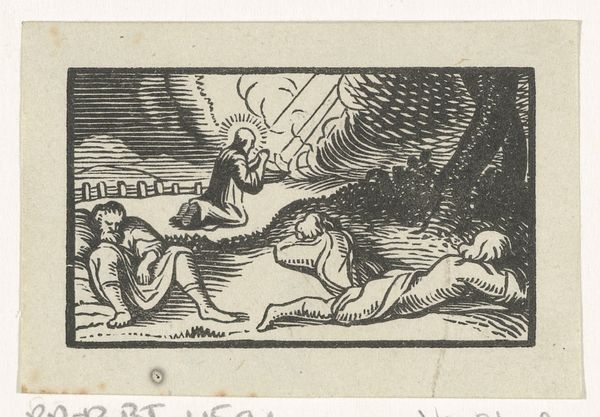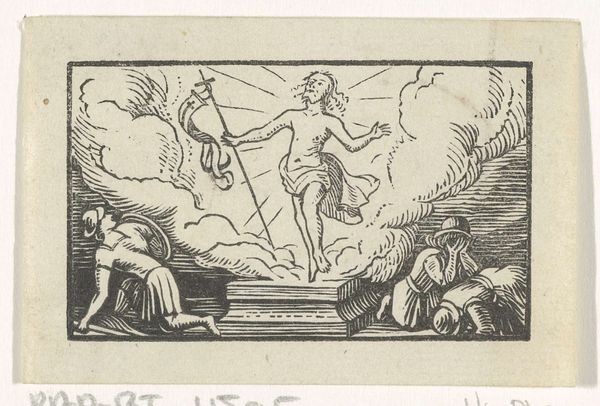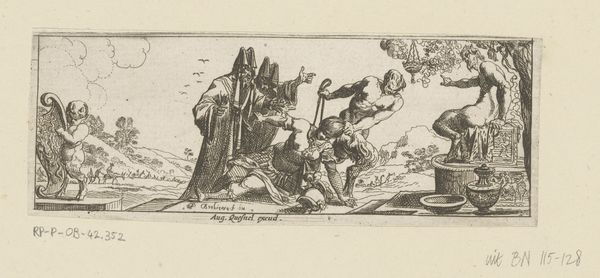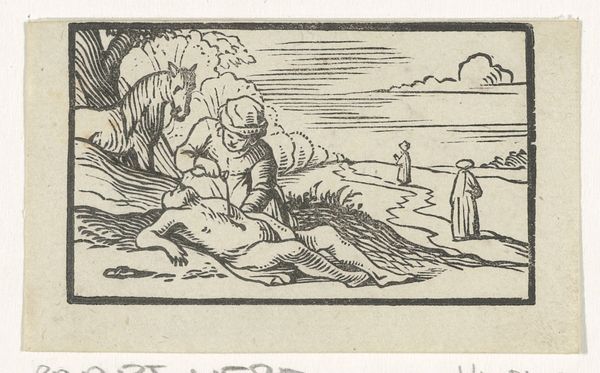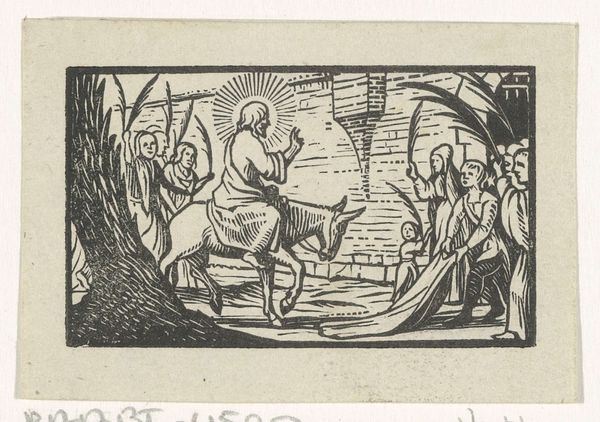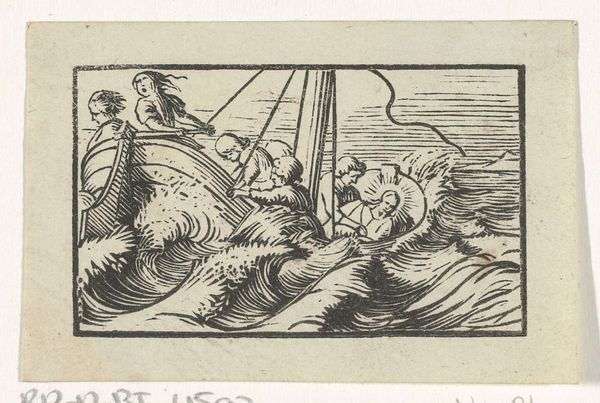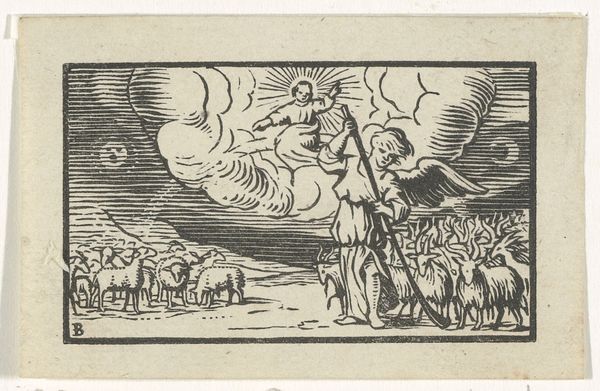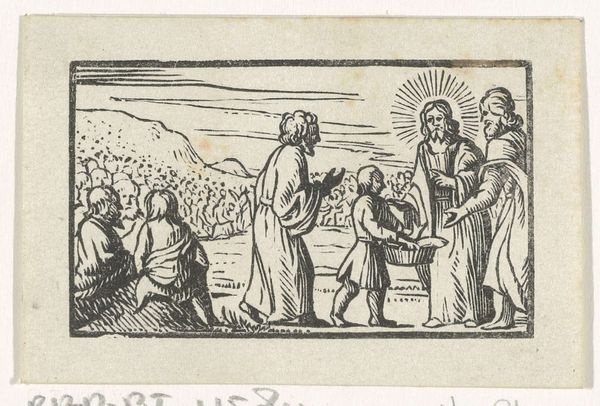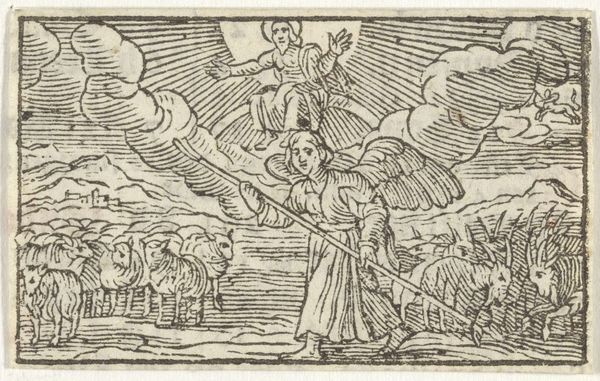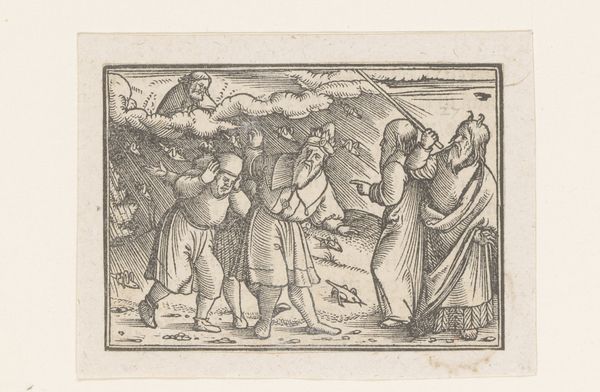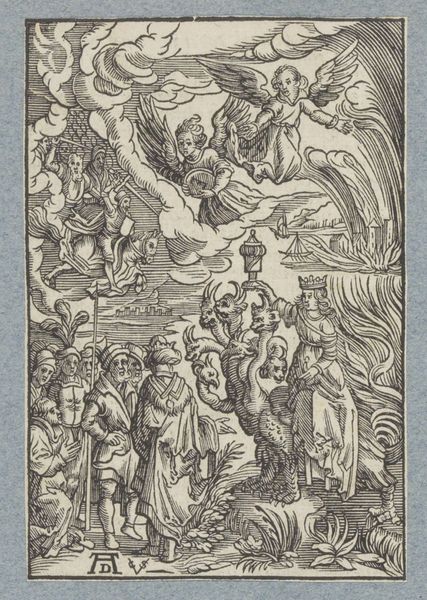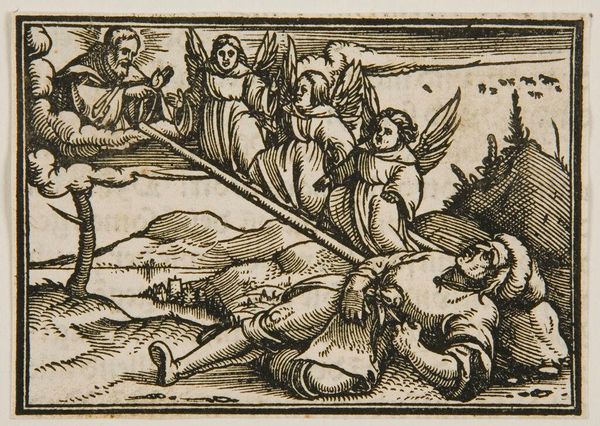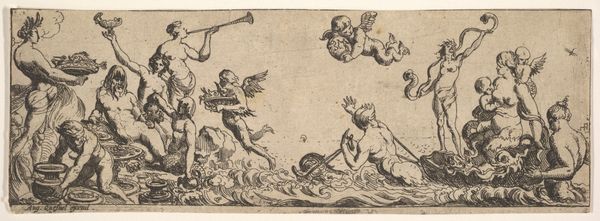
drawing, ink, engraving
#
drawing
#
narrative-art
#
baroque
#
pen illustration
#
figuration
#
ink
#
line
#
history-painting
#
engraving
Dimensions: height 44 mm, width 66 mm
Copyright: Rijks Museum: Open Domain
Editor: This ink drawing by Dirck de Bray, made sometime between 1635 and 1694, is titled "Hemelvaart van Christus" – The Ascension of Christ. I’m immediately struck by the upward thrust of the composition and the expressive, hopeful faces below. What visual echoes do you hear when you look at this work? Curator: The ascension motif is fascinating precisely because of its enduring visual language. Notice how De Bray uses clouds not just as a physical setting but as a visual bridge. What do clouds traditionally symbolize in Christian iconography? Editor: Well, clouds often represent divinity or a sort of holy separation, right? Curator: Exactly! They visually mediate between the earthly and the divine realms. De Bray uses line to create volume, emotion, and a palpable sense of wonder. Consider the gazes and gestures of the figures; they all point upward, united in faith and awe. This collective expression carries deep emotional and psychological weight. What previous images of this subject come to mind? Editor: I’m thinking of earlier Renaissance paintings, but those feel more… serene? Here, the Baroque drama feels almost desperate. Curator: Precisely! The Baroque era emphasized intense emotion. De Bray is using established visual symbols, angels and clouds, but charging them with new emotional energy to speak to the viewers of his time. This engraving taps into something truly profound about the cultural memory of faith and ascension. Editor: I never considered how an artist might deliberately build on pre-existing images to create something new and meaningful. I see so many connections now! Curator: Yes, it is rewarding to trace how artists communicate using this intricate visual vocabulary.
Comments
No comments
Be the first to comment and join the conversation on the ultimate creative platform.
